|
The inimitable Piping Plover duo “Monty” and “Rose” are back as of Monday. The news delighted many, especially since Monty was a day behind schedule. Migration journeys of 1,000-plus miles are never to be taken for granted. Here’s a roundup of coverage from this week. The Chicago Tribune’s Morgan Greene has been on this story from the very beginning, just a couple of weeks after the plovers landed in Chicago. She spoke extensively with Dr. Francesca Cuthbert of the University of Minnesota and the Great Lakes Piping Plover Research Team and local plover fans Patricia O’Donnell and Mark Kolasa, who first saw Rose on Sunday. Link to story. WTTW’s Patty Wetli has chronicled the plovers and the need for a habitat addition all winter long. Site Steward Leslie Borns spoke for many by adding how nerve-wracking it was waiting for Monty to arrive after Rose did. Link to story. Block Club Chicago’s Joe Ward has covered the plovers consistently, too, as part of his Uptown-Edgewater-Rogers Park beat. Link to story. ABC 7’s John Garcia visited Montrose Beach just as Monty returned on Monday. This may mark the coinage of a new term for the duo, “Chicago’s first fowl couple.” Link to story. The Chicago Sun-Times’ Zinya Salfiti included comments from Louise Clemency of the U.S. Fish and Wildlife Service’s Chicago office. Link to story. There were also mentions on CBS 2, WGN TV, Chicago Public Radio and likely more. I was at Montrose on Wednesday. It was a cold, blustery day, and yet there was a steady stream of onlookers, photographers and well-wishers. It’s great to see so much interest, which undoubtedly is an overall positive. The birds also need some space, though. It’s easy to forget they are critically endangered (even as Monty flew right up to me as if to say hello). Wildlife officials decided to close off the entirety of the dunes to the public for now as the plovers prepare for nesting. If you do go, remember to abide by the American Birding Association’s Code of Birding Ethics: (b) Avoid stressing birds or exposing them to danger. Be particularly cautious around active nests and nesting colonies, roosts, display sites, and feeding sites…Always exercise caution and restraint when photographing, recording, or otherwise approaching birds. Now some more fun stuff. I want to thank my frequent collaborator Bill Fogarty of Black Coffee Pictures for coming up with this design to celebrate plovers. Bill came to the premiere of “Monty and Rose” at Music Box Theatre in November 2019 and, like so many, became smitten with the birds and was intrigued by their story. He designed the label for Piping Plover Pale Ale when it was released last year by Imperial Oak Brewing. He’s also going to be developing motion graphics for “Monty and Rose II,” which is coming this fall. Thank you, Bill, and I’ll see you for a backyard frosty soon.
1 Comment
In March as part of our final fundraising push for "Monty and Rose II," we featured an array of Monty and Rose supporters. Here's a look at each of the folks we featured.
Ald. Cappleman on his support of more habitat at Montrose: "These birds are true survivors."3/24/2021 Ald. James Cappleman (46th) thinks now is a great time to add to the habitat at Montrose Beach Dunes. That’s great news for birds and for a small parcel that’s home to an array of federally and state-listed flora and fauna—28 plant species and 18 bird species in all. The additional 1.5 acres would expand a site that’s been reduced by high lake levels and erosion.
“The area encompasses the habitat used during the most critical phases of breeding, brooding, and rearing of [the] Piping Plover chicks,” Cappleman wrote this week in a letter to the Chicago Park District’s leadership. “Additionally, the habitat expansion would protect a colony of more than 150 Bank Swallow nests. Bank Swallows are described by the nonprofit Partners in Flight as ‘a Common Bird in Steep Decline.’” The pair of endangered Piping Plovers that have nested at Montrose the past two years have been a major factor in the alderman’s thinking. That’s great to hear, as some birders and local residents are still smarting from a music festival that would have happened on the beach, something I highlighted in a 2019 documentary I made about the birds. “It was Monty and Rose that highlighted the Montrose Beach bird sanctuary and how important it is across the world,” Cappleman told me. “It was reading and hearing about Monty and Rose that did that.” The question about adding to the dune habitat first came up last year and has lingered throughout the winter. Adding the habitat provides more permanent protection for the plovers and rare plants that sprung up on barren sand last year. The habitat addition would be open to the public when not in use during nesting season. Cappleman cites the pandemic, too, and the role nature has played for those looking for a respite in challenging times. “We connected with these birds,” Cappleman says, “in a time when we are trying to survive ourselves.” Montrose Beach Dunes Volunteer Site Steward Leslie Borns, who’s led the restoration of the dunes during the past 20 years, has requested a decision from the Park District by April 20. The plovers are expected back in late April. Wrote the alderman: “It’s my hope you will grant this request so that Monty and Rose will be welcomed back this spring with open arms.” Production is progressing on "Monty and Rose 2," but we still need additional gifts to make the film a reality! Your contribution will go to editing and production costs.
This is the first in a series of profiles in March that show how a pair of Piping Plovers have inspired so many. Here’s the perspective of Paul Petersen, a software executive from Burr Ridge who’s donated to “Monty and Rose.” Can you help protect a Chicago endangered species by donating before the March 31 deadline? -Bob The story was front page: small birds on the beach and the clash with a big city. It was a story of the 2019 summer, the plover’s fragile reality, and the birders who stood watch. One of the things that struck me was a comment from one of the executives about the concert [Mamby at the Beach]. He said something about “so it’s one species where does it all end.” It struck me that so many more people need to be educated. Life is so much richer with a variety of animals. Here is a plover that is so vulnerable. I thought with that comment, and I thought maybe a documentary that got the story out--and not just because the plovers are cute. I thought the plovers might be a great story vehicle for the plight of animals conflicting with an urban area environment. But that guy--we have to counter that thought. The plovers offered a very, pure simple story about intermixing with the urban environment and what mankind’s reaction to that should be. And the fact that they’re cute--that gets so much more publicity. As I travel for work, people are asking me about the plovers in Chicago. While the plover may or may not be the species that saves mankind, I think the world is a little less beautiful if we lose a species. So you have to learn from the ones you can work with. I contributed to the first film as I knew this truly was Part 1. Now we have follow-up reports on the plovers and chick sightings. Part 2 will be an important sequel that adds more depth to this ongoing saga. The [first] film is concise, well-filmed with a spritely pace and straightforward perspective. I’ve already contributed for Part 2. Can’t wait. MEARS, Mich. -- The weekend of October 10-11 brought us to western Michigan for filming on piping plover breeding grounds, specifically the locations where Monty and Rose hatched in 2017. We gained enormous insight into the life cycle of Great Lakes piping plovers while there, but it was the towering sand dunes of Silver Lake State Park that left the biggest impression on us. These dunes are vast and a sort of mini-Sleeping Bear Dunes, about halfway south along the mitten, between Ludington and Muskegon. Sarina Haasken of the Great Lakes Piping Plover Recovery Project kindly joined us and showed us around the majestic landscape. We trekked to a high point on the dunes, between Lake Michigan and Silver Lake itself, which is ringed by open sands and forested inclines. While we were there, we were astonished to find two piping plover eggs from the previous nesting season. The eggs were from an early clutch belonging to YOGi and BYL, and dated to June, according to Sarina, who carefully recovered them. They were found in an expanse surrounded by acres and acres of sand in every direction. From there, we traveled to Muskegon State Park, which was a true pleasure as well. Plover monitors Carol Cooper and Heather Sellon showed us where piping plovers have nested near the beach house there. For us, this was a more conventional setting for piping plover nesting, as it had some resemblance to Montrose Beach in Chicago.
In addition to these sites, we visited Ludington State Park and met local birders Dave Dister and Joe Moloney, who gave us some of the history of piping plovers in Mason County. It was wonderful to meet birders on the other side of Lake Michigan and share the story of Monty and Rose with them. We are thrilled with the video we captured on this trip and look forward to sharing it when the time comes to complete "Monty and Rose II." --Bob Dolgan By Georgie Lellman For five Wisconsin piping plovers, Illinois was a safe haven for a time this summer. Biologists rescued five birds from their home in the Cat Islands near Green Bay, Wis., on July 24, and brought them to Illinois Beach State Park in Zion, which borders Lake Michigan, just south of the Wisconsin-Illinois state line. The plovers, which are federally classified as an endangered species in the Great Lakes region, faced fatal risks at their home. The reason for the relocation? An outbreak of botulism in Green Bay, which had already taken the lives of many ducks and shorebirds, as well as some piping plover chicks—more than 100 birds according to Illinois Department of Natural Resources’ Brad Semel. Botulism affects nerve endings and impacts muscle movement, which causes birds to become lethargic and weak and often results in drowning in infected waterbirds. On this World Shorebirds Day, it’s worth a closer look at botulism, one of the greatest threats facing shorebirds and other taxa in the Great Lakes. The botulism in this case is type C, which the USGS explains is caused by “a natural toxin produced by a bacterium (Clostridium botulinum) commonly found in the soil.” Botulism spores are abundant in soils and aquatic sediments in many of the Great Lakes. Michigan Sea Grant remarks that “under the right conditions, the spores germinate and begin growing the toxin-producing bacterial cells.” The botulism is concentrated in invertebrates, which feed on water and sediments containing the bacteria. Shorebirds ingest the invertebrates—and large concentrations of the botulism toxin—and the effect on nerves and muscles takes hold. Increased water temperatures and seiches—a periodic rising and lowering of water levels in an enclosed or semi-enclosed body of water—create conditions ripe for botulism. The lake bed can be exposed amid the shallow waters of southern Green Bay and waves can pick up and distribute the toxin. With global air and water temperatures increasing, including temperatures in the Great Lakes region, there is an increased potential for botulism outbreaks, placing greater harm on the endangered shorebird species, like piping plovers, which depend on safe, healthy, and consistent habitats for survival. While the Green Bay piping plovers—four juveniles and one adult—were quickly relocated to northern Illinois, many others were not recovered in time.
At the time that the plovers were relocated to Illinois Beach, they were greeted by a now-famous Illinois piping plover, “Monty,” who had wandered north from Montrose Beach in Chicago. Monty was first seen in Illinois at nearby Waukegan Beach in 2017 and then attempted to nest there with “Rose” in 2018. Since being rescued, at least two of the relocated piping plovers also made their way to Waukegan Beach before presumably heading away for the season. With any luck, both Monty and the relocated piping plovers will endure their lengthy migrations south and return to their Illinois breeding grounds next year! Georgie Lellman is a recent graduate of Kenyon College and an intern for Turnstone Strategies, which produced the film “Monty and Rose.” She is interested in environmental law and passionate about wildlife issues. Contact Georgie at glellman@turnstoneimpact.com. Sources consulted: Michigan Sea Grant, “Avian Botulism” Fox 11 News, “Endangered piping plovers relocated to avoid bird-killing bacteria” USGS, “Avian Botulism” Chicago Tribune, “Young piping plovers from Wisconsin released in Lake County to aid their southerly migration” Juvenile plover photos courtesy Gustavo Ustariz.  Dori Levine Dori Levine Dori Levine has been a plover monitor for the past two years at Chicago’s Montrose Beach. She joined us to share the story of her tattoo of Rose and her thoughts on the 2020 season. When not monitoring plovers, Dori works in Accounts Receivable for a facilities management company. Q: How did you become a plover monitor? DL: I was newly a birder. Even when I was younger, I remember my 5th grade teacher talking about an adopt a baby seal program. I was into learning about endangered animals in general. There was a call out that there were endangered plovers at Montrose Beach and if anyone wanted to help watch this endangered species. I was just interested and jumped right in. They sent out a packet [about plover monitoring], and I soaked it up like a sponge. Q: Why did you get a tattoo of Rose? DL: I always wanted a tattoo but never knew what I really wanted. It was hard to pick just one thing that I would always love. I enjoyed the time learning about these birds [in 2019] and felt like a mama bear with the chicks and had an affinity with Monty and Rose. And the fact that they were successful and that they might just come back…I was so hopeful. I thought I’d love to see a plover all the time. I’ve always been a water person and a shorebird made sense, especially a piping plover and Rose. Q: Why Rose and not Monty? Was it something about her in particular? DL: I love Rose. I thought it was funny last year when she was not leaving, and Monty had to fight her to leave. I was drawn more to Rose. I liked how her [neck] band was thicker and not straight and a little rough around the edges. For whatever reason I thought that she was a little feisty mama and I liked that. So I do call my tattoo Rose in honor of her. I never looked back I just thought [the tattoo] reminded me of the whole experience and my love for this bird I never even knew existed before. After volunteering for the 2019 piping plover watch, I felt like it was a way to memorialize this time for me. Q: What are your thoughts looking back on two years of piping plover monitoring and Monty and Rose? DL: I think I was much more stressed last year. There were dogs—off-leash and on-leash—volleyballs, predators and lots of people around. It was a lot to keep track of, especially when the chicks were just running all over the place. It was a little more stressful. This year—man did they choose a great nesting site—but it was hard to watch them on the nest. You were literally looking for a head or tail between two slices of grass. ‘Who’s here is it Monty or Rose?’ You couldn’t see who was who. It was so difficult to see. But it was less stressful with less people on the beach, less animals, no balls, and no music. For the most part it was a pretty calm time. I think all the volunteers would agree with that. I for one thought it was a privilege to be at the beach. To me birdwatching is meditative. It was a privilege just to be out there and being able to learn about them. |


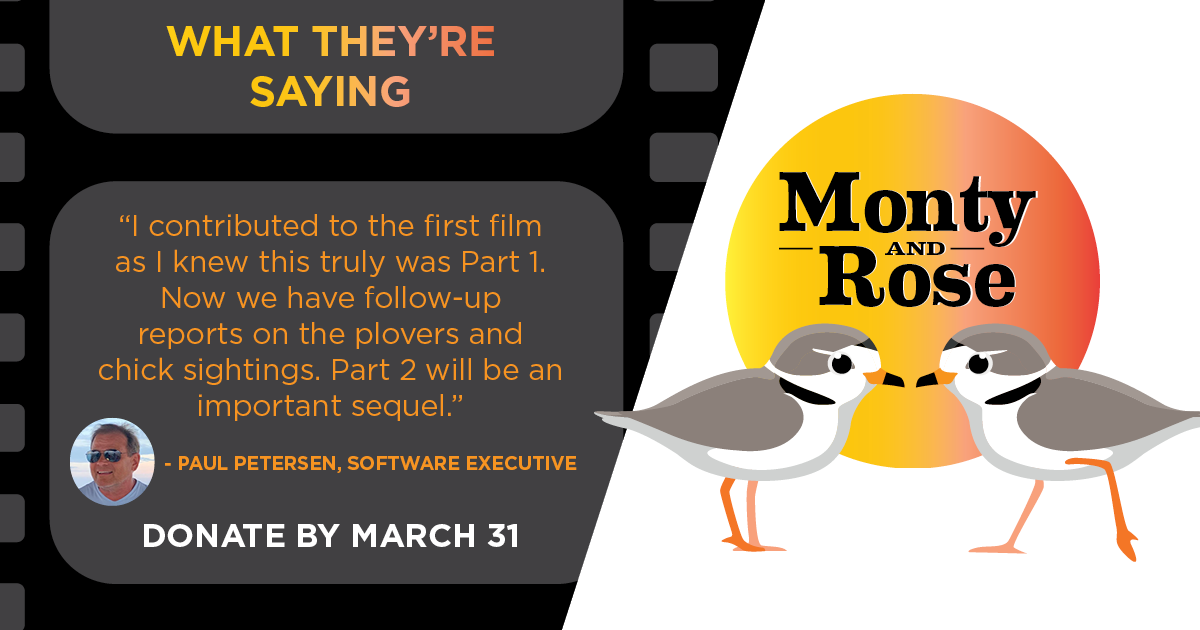
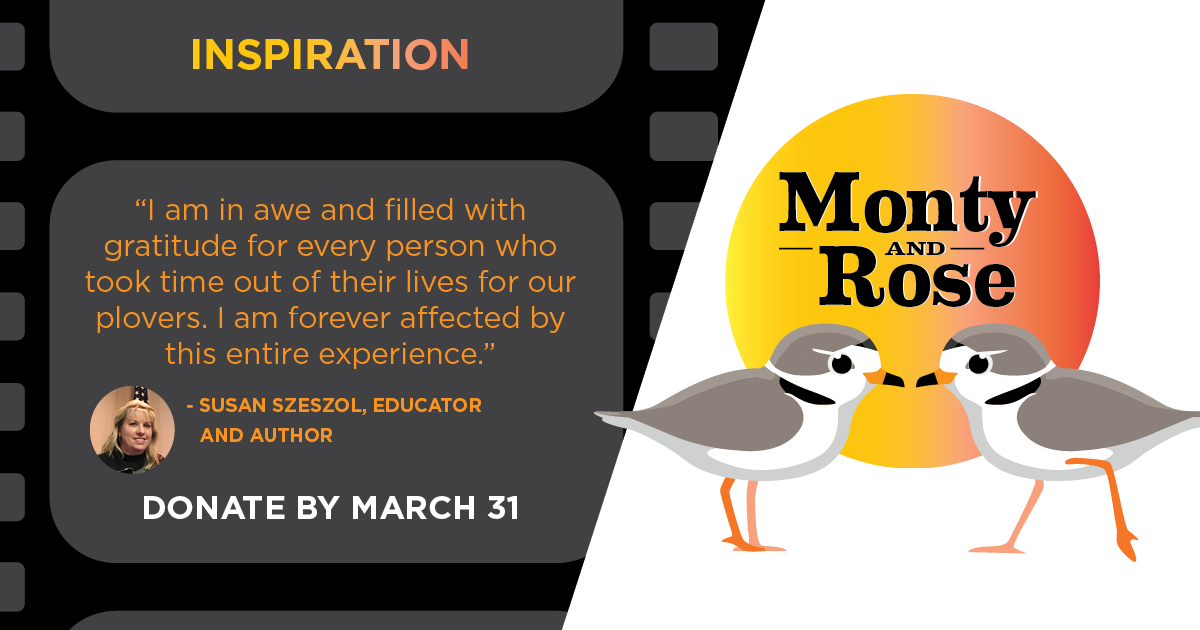
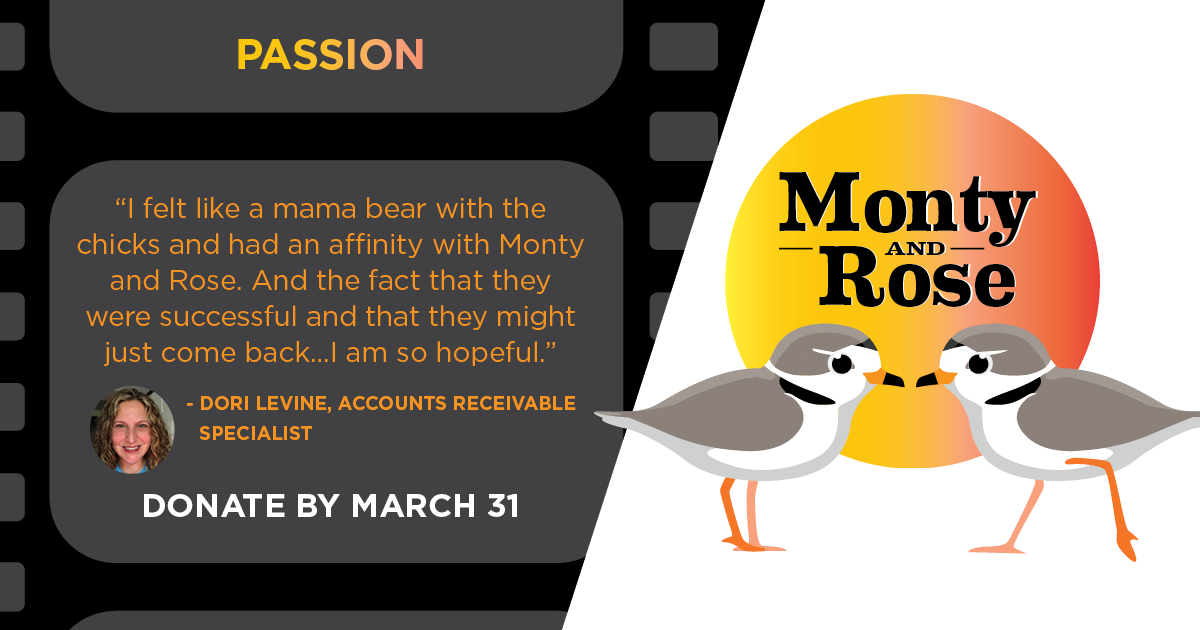

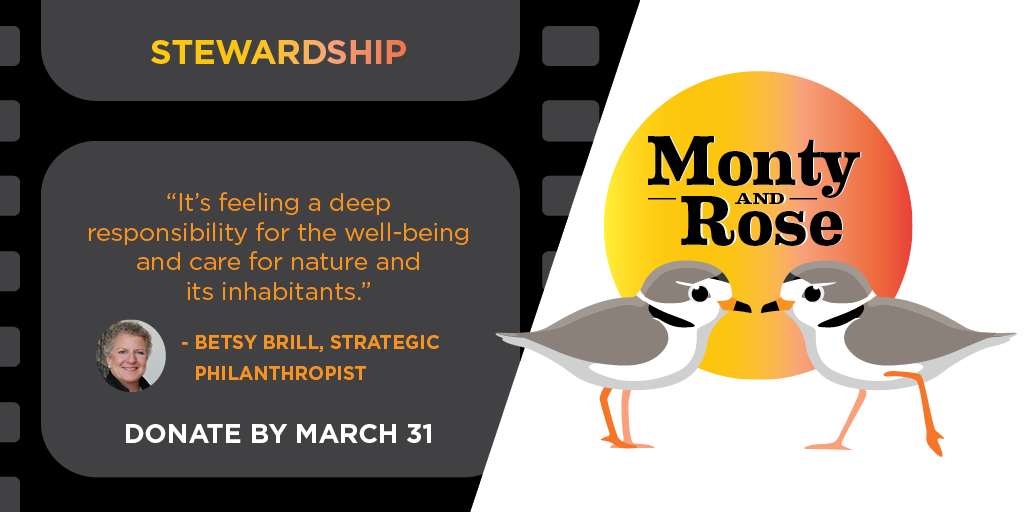
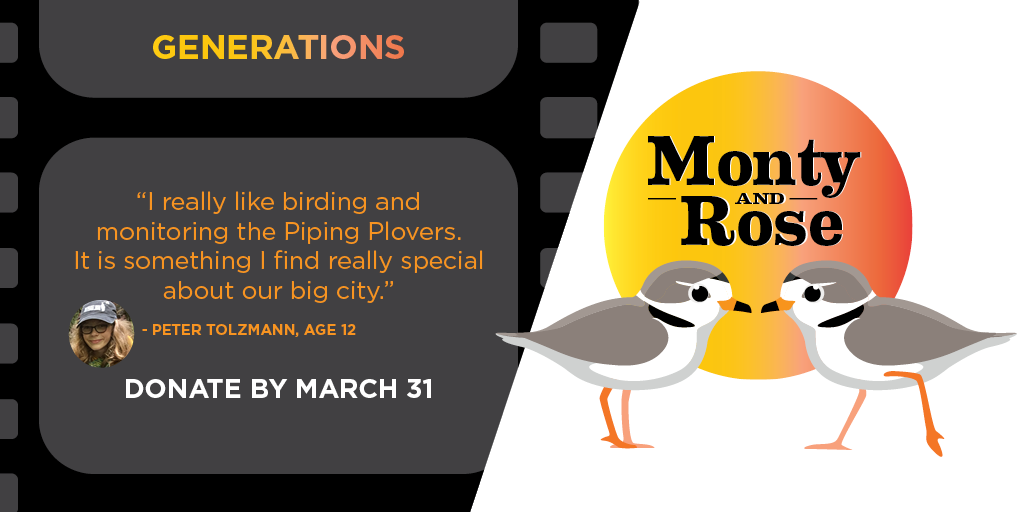
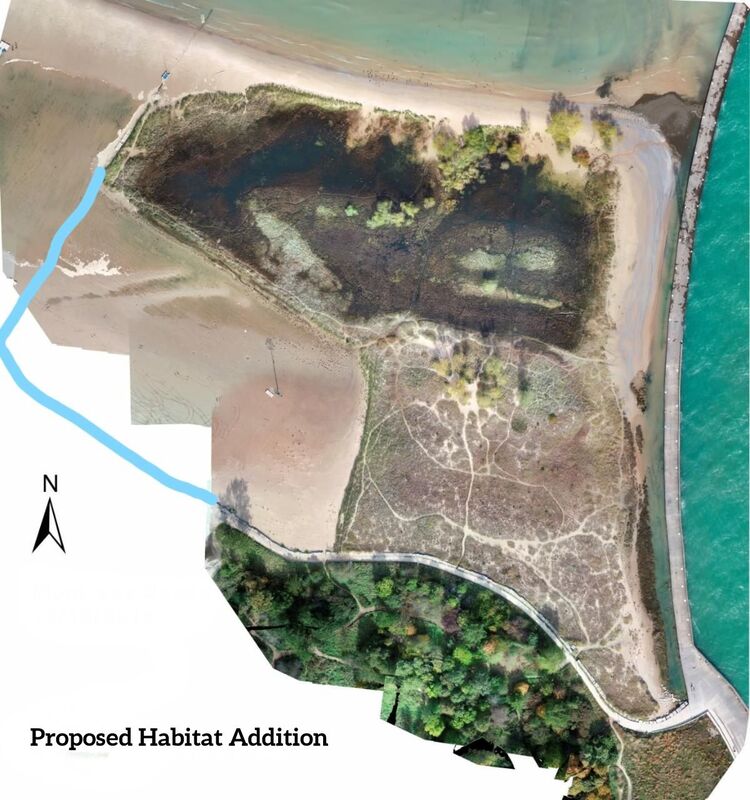

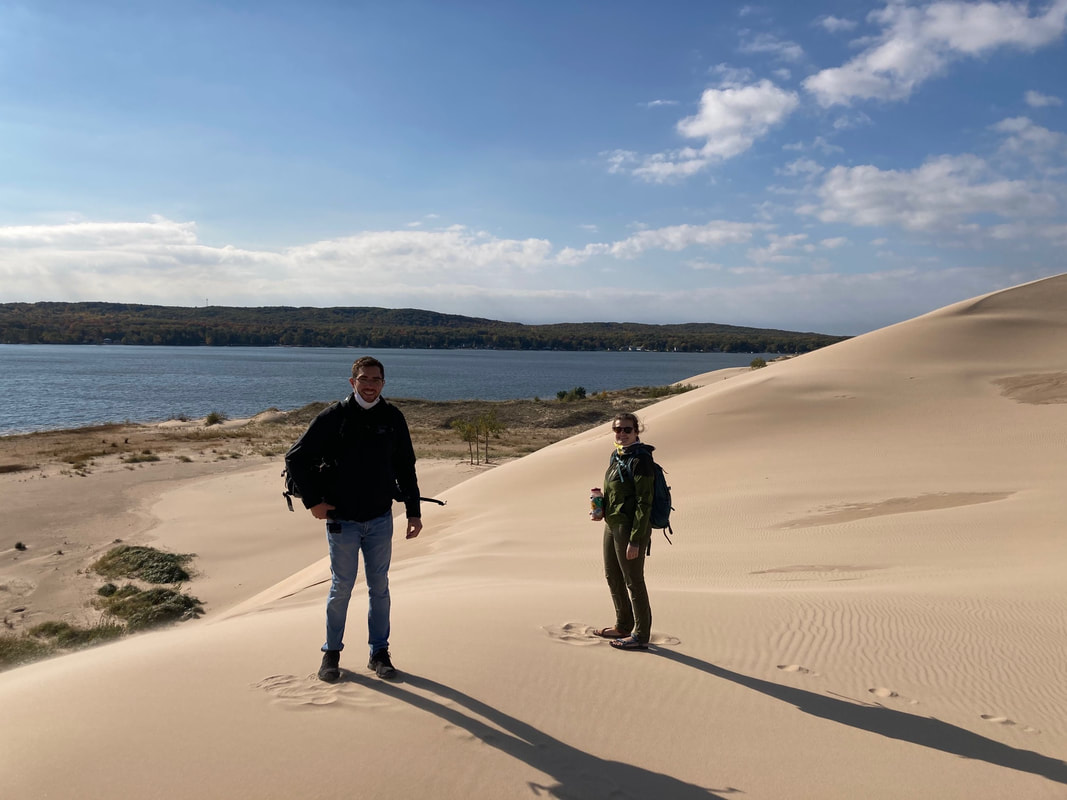


 RSS Feed
RSS Feed